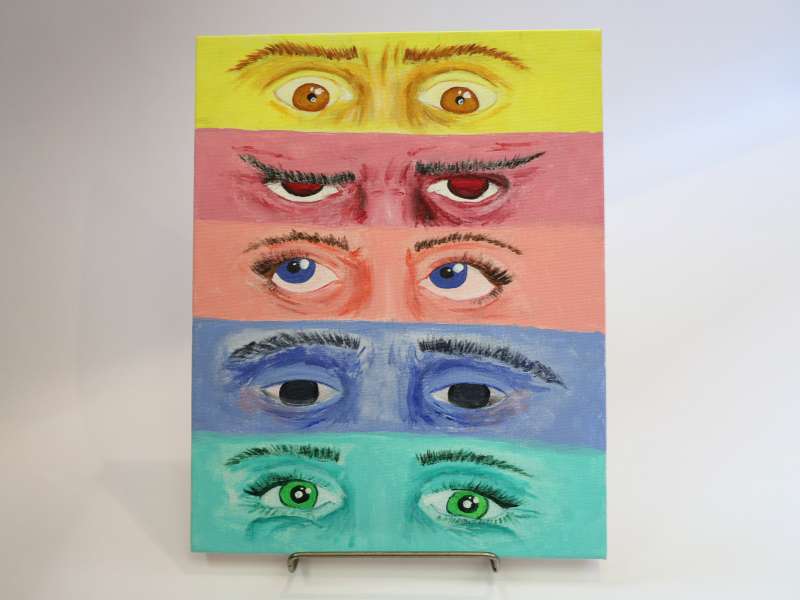Nursing students use art to explore psychiatric-mental health topics in innovative final project
June 17, 2025

Nursing students at Virginia Commonwealth University wrapped up their spring semester with something a bit unexpected: paint, sculpture, mixed media and storytelling.
As part of an innovative approach to learning, students in NURS 355: Psychiatric-Mental Health Nursing were challenged to create original visual artworks as their final project that interpret, explore and communicate the complex realities of psychiatric illnesses and mental health disorders.
The five-credit course combines essential classroom learning with 60 hours of clinical experience to prepare undergraduate nursing students to understand, prevent, and treat common mental health conditions in individuals, families and communities. Beyond textbooks and clinical rotations, the course encourages students to reflect deeply, cultivate empathy and think creatively.
"This assignment fosters self-awareness, empathy, and critical thinking—skills essential for building therapeutic relationships and delivering holistic care," said Andrea Reed, D.N.P, M.S.N., RN, clinical assistant professor in the Department of Family and Community Health Nursing, who led the course. “It also reinforces the integration of evidence-based practice with the art of nursing, reminding students that compassion, presence, and creativity are as vital as clinical expertise. Through their artistic expression and written reflections, students help make mental health a topic that is not only visible but also deeply felt.”
The course covers common mental health conditions and how to support individuals and communities in preventing and managing them. According to Reed, the creative final project often brings a new layer of depth to students' understanding.


“By engaging with mental health topics through a personal and artistic lens, they are challenged to move beyond memorization and to consider the lived experiences of those affected by conditions like anxiety, depression, schizophrenia, and substance use disorders,” she said. “This project bridges theory and practice by requiring students to synthesize what they've learned in class—from biological and psychological to sociocultural frameworks—and express it in a way that resonates emotionally and intellectually.”
The assignment asked students to create a piece of visual art that conveys the experience, stigma or emotional landscape of individuals living with a particular psychiatric or mental health disorder. The result was a gallery of insightful and often emotionally charged pieces.

Inspired by the PostSecret project—a community art initiative started in 2004 where people anonymously share personal secrets on postcards—Reed encouraged students to express complex mental health experiences through art and storytelling.
Research shows that incorporating creative activities into nursing education helps students develop critical thinking, observational skills, and empathy: key qualities for providing high-quality patient care. Studies suggest that engaging nursing students in art-based learning not only enhances creativity but also improves their ability to understand and manage complex situations.
The course culminated in a class-wide exhibition where students shared their artwork and engaged in discussions about the mental health themes and experiences they aimed to capture. This exchange gave students an additional opportunity to deepen their understanding of the realities behind psychiatric illnesses and disorders.
“The act of creating art deepens empathy, enhances reflective thinking, and strengthens their ability to communicate complex ideas with sensitivity and clarity. Ultimately, it helps transform academic knowledge into compassionate, person-centered care,” said Reed.
View more of the students' artwork on our Instagram or Facebook pages.